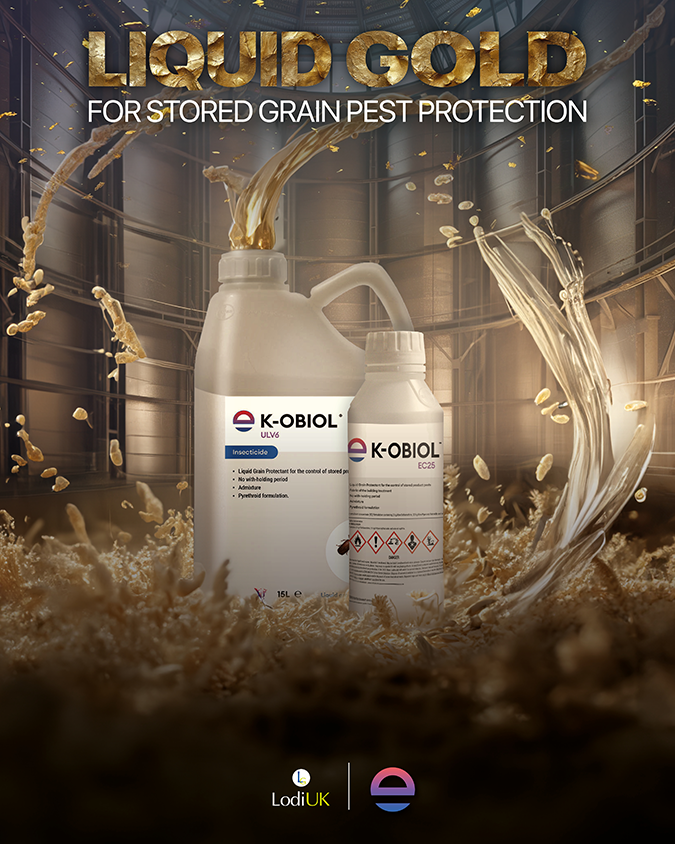.png)
One thing is certain this season: If steps aren’t taken to keep problem insect pests out of grain stores; they’ll move in on grain, infesting precious harvests and pinching profit.
This may sound like obvious advice; but research shows that 90% of farm grain stores harbour at least one species of insect known to destroy grain, and surprisingly only 40% of growers use an insecticide to treat their grain store, or grain, to prevent devastating infestations from the most common insect pests.
Prevention is Better than Cure
“As always, preventing pests is always easier than tackling an established infestation, states Envu Account Manager, Ken Black. “Thorough cleaning of the store is essential prior to harvests arriving, to give the best chance of keeping new crops free from infestation.”
Early detection is key to prevent rising populations and limit damage to grain. Ken advises monitoring for changes in temperature and identifying ‘hotspots’. “More activity means more heat, and more heat means more damage,” he says.
Know Your Stored Grain Pests
Ken explains that good knowledge of stored grain pests is helpful when planning prevention and control strategies. “It’s useful to understand that none of the pests enter the grain store from the field during the harvest, and even if they did, they wouldn’t survive, as they aren’t adapted to the store environment,” he says. “Instead, grain storage insects lie dormant from previous harvests on ledges or in cracks in the store, and are also brought in on machinery, on people, or on transport delivering or collecting from the farm.”
Primary store insects, including the grain weevil and the lesser grain borer, infest whole grain, leaving it vulnerable to attack from secondary pests that attack and contaminate stored crops, leaving hollowed out grains.
“Secondary insects, such as the rust-red flour beetle, then gain entry, living on the damage caused by the primary pests. Insect activity increases store temperature and creates moisture, which then leads to the development of mould and fungi, and a snowball effect of grain damage is created,” Ken explains.
In addition, class three pests, like Mites, can be a serious problem, causing direct damage and taint, and in large numbers allergic reactions in both humans and livestock.
Take Care of New Harvests
The effective protection of grain in store relies on Integrated Pest Management (IPM). This provides a program of prevention, monitoring and control strategies to limit pest damage by the most economical means possible and with the least environmental impact. A well-planned IPM strategy for grain stores incorporates good hygiene, monitoring, and control with chemical treatments.
After grain arrives, weekly monitoring means problems can be detected early, and that control may be possible using a combination of cooling, cleaning, or drying. Ken suggests that the presence of insect pests should be continually monitored using a combination of floor and pit fall traps, as these give a good indication of potential insect populations within the store.
“Traps should be placed at regular intervals within the building, both on ledges and walls and on the surface of the grain to target different pest species,” he advises. “Check them weekly until the grain reaches the target temperature of 50oC, and providing the grain remains at this temperature, monitor on a monthly basis. In the spring, when temperatures rise and insects become active once again, revert to weekly monitoring.”
If a chemical control is needed, K-Obiol™ has become the go-to, most reliable option for the eradication of insect problems in grain stores.
K-Obiol™ is approved for use on all cereal grains including wheat, barley, maize, rice, oats and triticale and is accepted for use by the Brewing Research International (BRI), the National Association of British and Irish Millers (NABIM) and the Trade Assurance Scheme for Combinable Crops (TASCC).
Delivering unrivalled efficacy against the most common insect pests, K-Obiol™ provides preventative and curative protection. It can be applied to the grain post-harvest, and will prevent damage for up to 12 months.
When applied at its recommended rate, the residue level of K-Obiol™ is four times lower than the Maximum Residue Limit (MRL) for grain (0.25mg/kg). K-Obiol™ is a low odour formulation that has no effect on seed germination; and, as it has no withholding period, any grain treated with the product can be processed straight away.





